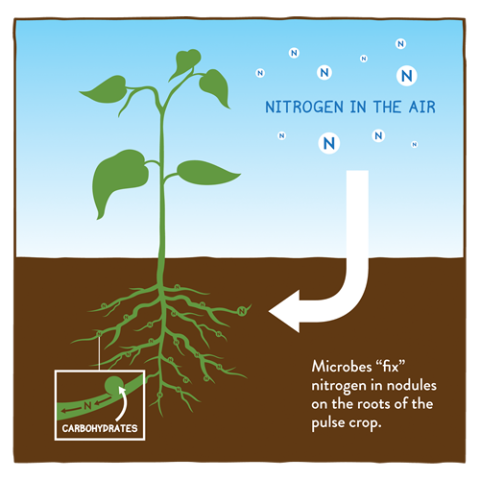Source of information
‘Minimising nitrous oxide intensities of arable crop products (MIN-NO)’. A 60 month project (RD-2008-3474) which started in July 2009. The work was sponsored through the Defra Sustainable Arable LINK programme (LK09128), including a contract for £300,000 from AHDB Cereals & Oilseeds.
Approach used
Field experiments at 3 sites in 2011 and 2012 testing spring beans, winter beans, combinable peas and vining peas, with winter wheat and winter OSR at commercial N rates, all compared against a nil N fertiliser winter wheat control. Each experimental plot was 12m x 12m and replicated 3 times. Plots were split to compare effects after crop residues were removed or incorporated. Measurements of N2O were made using static flux chambers for a 24 month period from sowing to 12 months after harvest.
Key findings
- Despite fixing large quantities of N, there was no evidence that the pulses tested in this study emitted significant amounts of additional N2O during the N fixation period.
- Regarding N2O emissions from crop residues, it was concluded that only residues with high N concentration of >2% N (measured at 100% dry matter) result in a measurable increase in N2O emissions and that the efficiency factor for these should be 1% of total N lost as N2O-N.
- Crop N residues from combinable peas and beans had an N concentration of 1.3% of total dry biomass and did not result in measurable increase in N2O emissions during the 12 months after harvest, compared with if crop residues were removed. The same conclusion was drawn for wheat and OSR crop residues.
- The N concentration of vining pea residues could be above 2% and therefore at risk of emitting more N2O.
Practical significance
No evidence that crop residues following combinable peas or beans produce more N2O emissions than winter wheat or winter oilseed rape. Vining pea residues may emit more N2O if residues have a N concentration greater than 2%
Remaining knowledge gaps
Lack of data for N2O emissions from residues with and N concentration of between 1.7 2.2%.
Links for further reading
Full project report can be found at
https://ahdb.org.uk/minimising-nitrous-oxide-intensities-of-arable-crop-products-min-no







